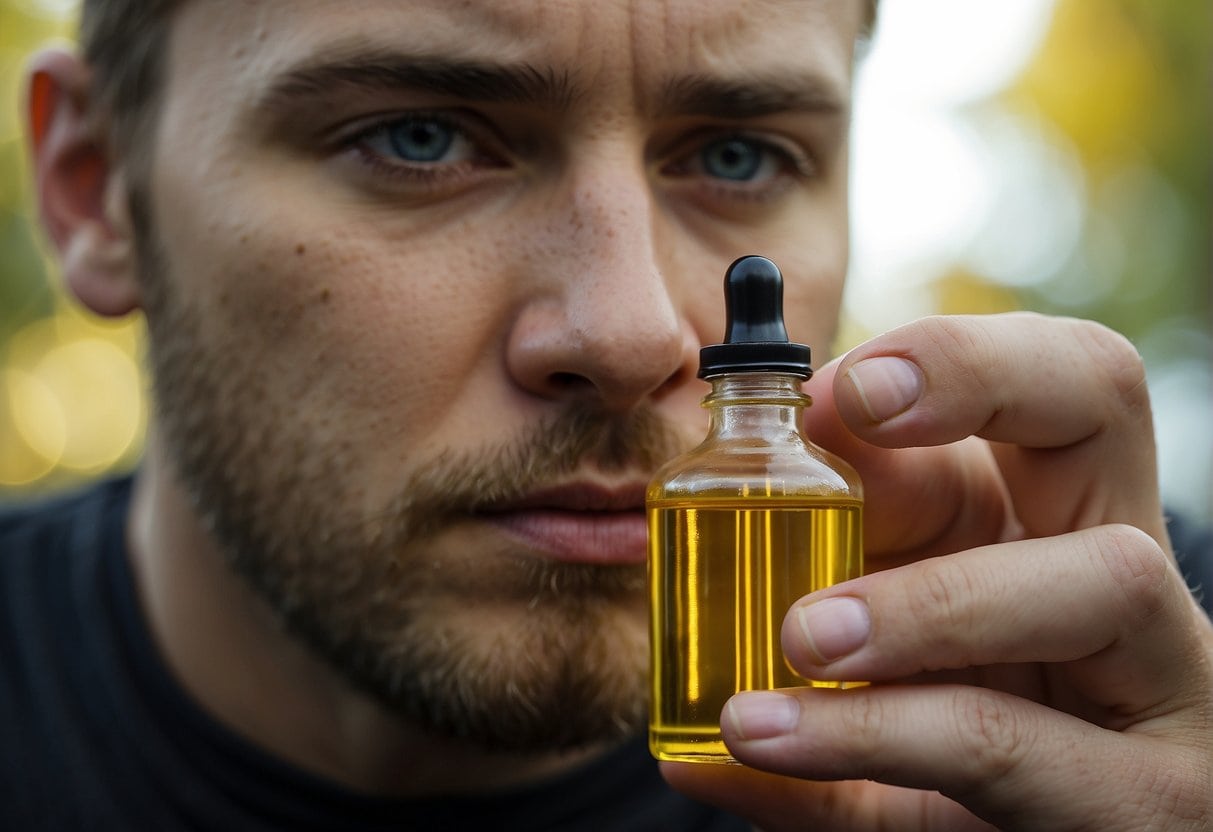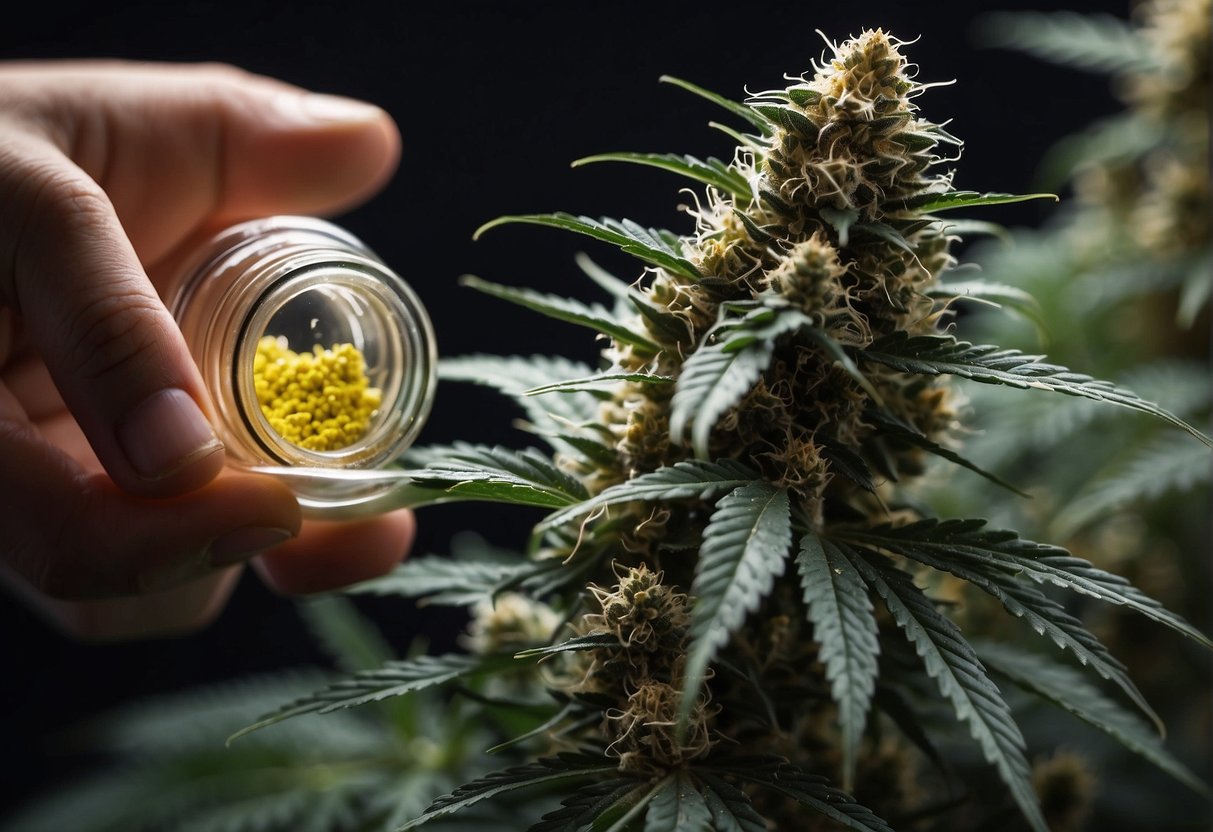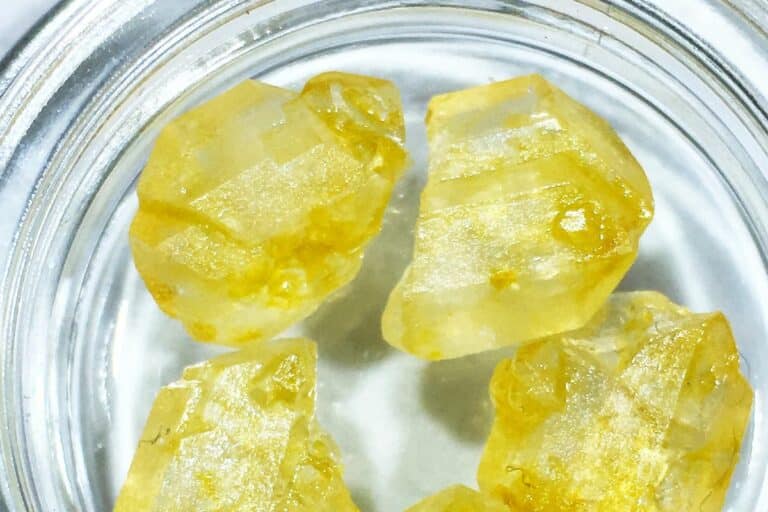THCa for Pain Relief: Unlocking Cannabis’s Non-Psychoactive Benefits
Curious about how some keep their cool and kick pain to the curb with cannabis? Enter **THCa**, the stealth superstar in the leafy shadows. It’s nothing like its better-known relative, THC, which can send you on quite the trip. **THCa** is the ace up your sleeve, letting you say adios to pain while your head stays in the game. Ideal for those wanting to lose the pain but keep their sharpness. Step into the secret world of **THCa** and discover how this powerhouse quietly works its magic, keeping you smooth without the fog. Stick around, as you’re about to uncover why **THCa** might be your clear-headed journey to feeling groovy.
- Understanding THCa and Pain
- Methods of Using THCa for Pain
- Potential Health Benefits and Side Effects
- Legal Status and Accessibility
- Considerations for Use
- Frequently Asked Questions
- What are the differences between THCa and CBD in terms of pain relief efficacy?
- What are the anti-inflammatory properties of THCa?
- How does the potency of THCa compare to other pain relief compounds?
- What methods are recommended for the administration of THCa to alleviate pain?
- Are there any potential side effects associated with using THCa for pain management?
- Can THCa be used in conjunction with other treatments for comprehensive pain management?

Emerging studies suggest that THCa may play a role in pain management, possibly offering anti-inflammatory benefits. It’s important to note, however, that while THC is well-known for its pain relief properties, THCa is only beginning to be understood. Because it doesn’t affect the brain in the same way, THCa might provide pain relief along with a clearer head, which could be particularly beneficial for chronic pain sufferers who require long-term, consistent management of their symptoms.
As you navigate the possibilities of using cannabinoids for pain relief, staying informed about the different compounds and their effects is crucial. With ongoing research, the potential benefits of THCa are becoming more evident, making it a compound of interest for anyone looking to address pain using cannabis-derived products.
Understanding THCa and Pain
In exploring the potential benefits of THCa for pain management, you’ll discover how this cannabinoid operates and why it might be an important component in treating various forms of pain.
THCa Explained
Tetrahydrocannabinolic acid (THCa) is a non-psychoactive precursor to delta-9-tetrahydrocannabinol (THC), found in the raw cannabis plant. When cannabis is heated, through a process known as decarboxylation, THCa converts to THC, the compound primarily associated with the “high” from cannabis. Unlike THC, THCa doesn’t produce psychoactive effects, which makes it potentially useful for therapeutic purposes without impacting mental clarity.
Recent research suggests THCa may have anti-inflammatory properties. These properties make it a compound of interest for conditions characterized by chronic pain and inflammation.
The Role of Cannabinoids in Pain Management
Cannabinoids, including both CBD (cannabidiol) and THC, interact with the body’s endocannabinoid system (ECS). This system plays a significant role in regulating pain, among other physiological processes. By influencing cannabinoid receptors (CB1 and CB2) within the ECS, cannabinoids can modulate pain perception and exhibit neuroprotective effects.
THCa, specifically, is believed to alleviate pain by working both with these receptors and independently of them, possibly offering broader anti-inflammatory effects than its decarboxylated counterpart. Moreover, individuals dealing with chronic pain may find THCa helpful due to these properties, which could make it an adjunct or alternative to traditional pain medications, particularly in conditions where inflammation is a root cause.
Methods of Using THCa for Pain

Tetrahydrocannabinolic acid (THCa) is a non-intoxicating compound found in cannabis, which, when consumed properly, may offer pain relief without psychoactive effects. Understanding how to use THCa can enhance your treatment options for pain management.
Raw Cannabis and Juicing
Raw cannabis is the plant in its natural state where THCa exists before heat induces decarboxylation. Juicing raw cannabis leaves and buds can provide you with a non-intoxicating treatment option rich in THCa. To benefit from juicing, use fresh plant material high in THCa content, and consume immediately to minimize THCa degradation.
- How to prepare:
- Clean fresh cannabis thoroughly.
- Juice whole plant—leaves and small buds.
- Drink fresh juice promptly to avoid loss of potency.
THCa Tinctures and Oils
Tinctures and oils can provide a convenient method to administer THCa for pain relief. These are liquid extracts made from cannabis plants that are high in THCa. Since these products are typically not exposed to heat during preparation, they retain the THCa content.
- Steps for use:
- Place a few drops of the tincture under your tongue.
- Hold for 30 seconds to a minute for sublingual absorption.
- Swallow any remaining liquid.
Smoking Vs. Vaporizing
It’s important to understand that smoking cannabis causes decarboxylation, converting THCa to THC, and therefore may lead to intoxicating effects. However, vaporizing at a low temperature can minimize the decarboxylation process, allowing you to inhale vapor with a higher THCa concentration.
- Temperature guide:
- Low temperature: Aims to reduce decarboxylation and maintain THCa levels.
- High temperature: Leads to full decarboxylation, transforming THCa to THC.
Potential Health Benefits and Side Effects
Before diving into the details, understand that THCa is a compound found in cannabis that has potential medicinal properties, but its use also comes with certain side effects and risks.
Research on THCa’s Efficacy
Research suggests THCa may offer health benefits such as neuroprotective and anti-inflammatory properties, which could be beneficial in conditions like multiple sclerosis and epilepsy. While clinical trials are limited, anecdotal evidence and preliminary studies hint at THCa’s ability to improve sleep, enhance appetite, and reduce nausea. It’s worth noting THCa is a precursor to THC, the active component in medical marijuana, yet it doesn’t produce psychoactive effects when consumed in its raw form.
- Neuroprotective: Potential to protect brain cells.
- Anti-inflammatory: May reduce inflammation and pain.
- Sleep and Appetite: Could improve sleep quality and stimulate appetite.
- Nausea: Users report reduced nausea.
Some studies like the one detailed on Headache Journal, highlight promising outcomes, especially for pain management. However, solid, peer-reviewed clinical research is necessary to confirm these findings.
Common Side Effects and Risks
Though THCa is touted for its medical potential, it’s not without possible side effects and risks. As with any component of medical marijuana, potential side effects may include dry mouth and increased heart rate, particularly if THCa is decarboxylated into THC. It’s important to consider these risks, particularly if you have preexisting heart conditions or are prone to dehydration.
- Dry Mouth: A feeling of cottonmouth often associated with cannabis use.
- Increased Heart Rate: Can be a concern for those with cardiovascular issues.
Moreover, legal and medical advisories often mention the lack of extensive research regarding long-term use and comprehensive lists of side effects. Until more data is available from controlled studies, you should approach using THCa with caution, particularly if considering it for serious conditions such as cancer or as an alternative to other proven therapies for chronic pain. Always consult with a healthcare professional before starting any new treatment, especially one involving substances derived from cannabis.
Legal Status and Accessibility
Before exploring THCa for pain management, you need to understand the complex landscape of cannabis legality, as it varies significantly between federal and state jurisdictions, and be aware of the different forms in which THCa products are available

Federal and State Laws
At the federal level, cannabis remains a Schedule I controlled substance, meaning its possession, sale, or use is illegal. This classification includes THCa, as it is a cannabis derivative. However, state laws differ widely. As of the cutoff date of my knowledge, medical marijuana is legal in many states across the United States. In states where it is allowed, you can commonly find cannabis products prescribed for conditions such as chronic pain. However, because THCa is not psychoactive like THC, its regulatory status can be less stringent in some states. You should verify your state’s specific laws to ascertain if THCa is considered legal or if it falls under medical marijuana regulations.
Availability of THCa Products
In terms of availability, if you are in a state where medical marijuana is legal, you might find THCa in various formulations. Cannabis oil, edibles, transdermal patches, and concentrates for dabbing are some product types that could be used for pain. Methods like vaping are also popular for administering cannabis-derived substances. It’s essential to purchase these products from a reputable source to ensure they meet state regulations for legality and safety.
Considerations for Use
When considering THCa for pain management, it’s crucial to navigate dosage, understand interactions such as the entourage effect, and seek guidance from healthcare professionals. THCa, a non-psychoactive precursor to THC found in raw cannabis, can impact your pain treatment outcomes.
Determining Appropriate Dosage
Dosage is a critical factor in using THCa for pain. Start with a low dose and adjust gradually, as effects can vary based on individual factors like body weight and metabolism. Clinical research might suggest recommended ranges, but personalization is key.
- Begin with a small dose: often a fraction of what is used for THC.
- Monitor your body’s response: Adjust the dose according to your specific needs and any observed effects.
Misjudging the dosage can affect both efficacy and safety, so careful titration is advised.
Understanding the Entourage Effect
The entourage effect postulates that cannabinoids like THCa work better when combined with other cannabis compounds, such as terpenes. This synergy may enhance the therapeutic benefits for pain relief.
- Cannabinoid receptors and terpenes: Consider products that preserve the full spectrum of cannabis compounds.
- Interaction with cannabinoid receptors is influenced by the presence of these compounds, possibly affecting the pain modulation properties of THCa.
Accessing the full potential of THCa may require leveraging the entourage effect, emphasizing the need for comprehensive product selection.
Consulting Healthcare Professionals
Before beginning treatment with THCa, it’s essential to consult with doctors or medical cannabis specialists.
- Safety: A healthcare professional can advise on potential interactions with other medications and assess the risk of side effects.
- Drug tests: Discuss any concerns regarding THCa and drug testing, as it is a THC precursor.
Working with a healthcare provider ensures you are using THCa effectively and safely as part of your pain treatment plan.
Frequently Asked Questions
In this section, you’ll find detailed answers to common queries about THCa and its role in pain management, helping you understand its unique properties and how it compares to other pain relief compounds.
What are the differences between THCa and CBD in terms of pain relief efficacy?
THCa, or tetrahydrocannabinolic acid, is a non-psychoactive cannabinoid found in raw cannabis plants, while CBD, or cannabidiol, is well-known for its pain relief and anti-inflammatory effects without the high associated with THC. THCa has been reported to help with pain, but it does not have the extensive research backing that CBD has for this specific use case.
What are the anti-inflammatory properties of THCa?
The anti-inflammatory properties of THCa make it a compound of interest for pain management. Research suggests that THCa can help modulate the immune system and reduce inflammation, similar to non-steroidal anti-inflammatory drugs (NSAIDs).
How does the potency of THCa compare to other pain relief compounds?
THCa is considered less potent than THC, its decarboxylated form, in terms of psychoactive effects. When it comes to pain relief, the effectiveness of THCa may vary, and more studies are needed to fully compare its potency to other compounds used for pain.
What methods are recommended for the administration of THCa to alleviate pain?
To preserve the properties of THCa, it is typically consumed in raw cannabis juices or tinctures. Heating THCa converts it to THC, so it is recommended to use methods that avoid exposure to high temperatures if you aim to benefit from THCa specifically.
Are there any potential side effects associated with using THCa for pain management?
While THCa is generally considered to be well-tolerated, some users may experience mild side effects, such as gastrointestinal discomfort or an allergic reaction. Consulting with a healthcare provider before starting any new treatment, including THCa, is prudent.
Can THCa be used in conjunction with other treatments for comprehensive pain management?
Yes, THCa can be used alongside other pain management treatments. It is crucial to discuss with your healthcare provider to ensure a safe and effective multi-modal approach to pain management, taking into account possible interactions with other medications.







